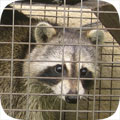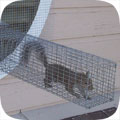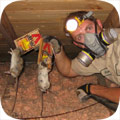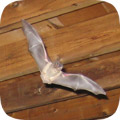- mountvernon@wildlifeanimalcontrol.com
Call 24/7 for a free quote:
914-202-4494
Mount Vernon Wildlife Animal Control
Professional Wildlife Removal Company Servicing Mount Vernon, NY
If you have a problem with wildlife in your Mount Vernon home, your best option is to hire a company that specializes in New York wildlife removal only. This is a specialty business, and regular pest control companies do not use the proper techniques to solve animal problems. I have spent many years reviewing New York and Mount Vernon, and I recommend the following:
ER Nuisance Wildlife Removal
Cell Phone: 914-202-4494
NOTE: If you have a dog or cat problem, call Westchester County Animal Services: (914) 632-2925

ER Nuisance Wildlife Removal specializes primarily in removing animals from attics of homes and buildings - this includes squirrels in attics, raccoons, and rats or mice in homes. New York also has a documented problem with
bats in buildings, and ER Nuisance Wildlife Removal is specially trained in bat removal. They also perform general wildlife trapping services, such as the capture and removal of skunks or opossums on the
property. Call 914-202-4494 to discuss your critter problem and schedule a same-day or next-day appointment. Click here to learn more about what prices we charge in 2020.
When hiring a company to solve your wild animal problem, you want these features:
- Specializes in wildlife removal, not pest control
- Fully New York and Westchester County licensed and insured
- Works 7 days per week (critters don't take weekends off)
- Performs full building inspections: enters and inspects attic
- Performs exclusion repairs, with guarantee against animal re-entry
- Offers cleanup of biohazardous wildlife waste
ER Nuisance Wildlife Removal is a full-service Mount Vernon wildlife removal company. This is very different from a regular Mount Vernon pest control company. The pest control companies spray poison to kill insects. This is not at all
similar to wildlife removal. ER Nuisance Wildlife Removal performs a full inspection of the home or property, and determines why the animal(s) are there, and if inside a building, how the animals got inside. All
animals (including rodents) are trapped and removed, or if possible, removed from the building using special exclusion devices. Once the animals are gone, preventative repairs are essential, and
cleanup is sometimes recommended.
 Mount Vernon wildlife trapping - it's not as simple as it may seem. It's illegal in New York to trap without a license. Trap type is very important and there are many different types, bait is somewhat relevant, trap placement
is vital, and there are dozens of small things that are very important to know.
Safety is a concern. Then once the animal is trapped, it must be removed and dealt with in the proper manner according to New York law. We offer Mount Vernon raccoon removal. Read more about how to get rid of raccoons.
Mount Vernon wildlife trapping - it's not as simple as it may seem. It's illegal in New York to trap without a license. Trap type is very important and there are many different types, bait is somewhat relevant, trap placement
is vital, and there are dozens of small things that are very important to know.
Safety is a concern. Then once the animal is trapped, it must be removed and dealt with in the proper manner according to New York law. We offer Mount Vernon raccoon removal. Read more about how to get rid of raccoons.
 Animals in attics - this is our specialty at ER Nuisance Wildlife Removal. Many types of animals like to live in attics. This includes squirrels, raccoons, rats, mice, bats, birds, and even possums. Critters like to go into attics for a safe place to live
and raise their young. Removing animals from attics is very complex work, partly because of the presence of baby animals. If you need Mount Vernon squirrel removal, we can remove all the squirrels from your attic, and seal out any future ones. Read more about how to get rid of squirrels.
Animals in attics - this is our specialty at ER Nuisance Wildlife Removal. Many types of animals like to live in attics. This includes squirrels, raccoons, rats, mice, bats, birds, and even possums. Critters like to go into attics for a safe place to live
and raise their young. Removing animals from attics is very complex work, partly because of the presence of baby animals. If you need Mount Vernon squirrel removal, we can remove all the squirrels from your attic, and seal out any future ones. Read more about how to get rid of squirrels.
 Rodent control must be done in a very specific way. First off, the most important thing is that all the openings that rats and mice can use to enter a house be sealed. Then all the rodents must be physically trapped and removed.
Never, ever use poison! Most Mount Vernon exterminators will just use this lazy poison technique to kill rodents, and it causes more harm than good - dead stinky rats, and it doesn't solve the problem. Call us for correct Mount Vernon rat removal. Read more about how to get rid of rats.
Rodent control must be done in a very specific way. First off, the most important thing is that all the openings that rats and mice can use to enter a house be sealed. Then all the rodents must be physically trapped and removed.
Never, ever use poison! Most Mount Vernon exterminators will just use this lazy poison technique to kill rodents, and it causes more harm than good - dead stinky rats, and it doesn't solve the problem. Call us for correct Mount Vernon rat removal. Read more about how to get rid of rats.
 Bat removal is a highly specialized task. New York is known to have colonizing bats who often live in buildings. Bats love attics. If not removed, the colony can grow to a very large size over the years. The bat droppings are often corrosive and
cause health risks. The same goes for bird droppings on or in buildings. We perform Mount Vernon pigeon removal and bird control. But our specialty is Mount Vernon bat removal. We remove 100% of the bat colony and seal the building so that it's totally bat-proof. Read more about how to get rid of bats.
Bat removal is a highly specialized task. New York is known to have colonizing bats who often live in buildings. Bats love attics. If not removed, the colony can grow to a very large size over the years. The bat droppings are often corrosive and
cause health risks. The same goes for bird droppings on or in buildings. We perform Mount Vernon pigeon removal and bird control. But our specialty is Mount Vernon bat removal. We remove 100% of the bat colony and seal the building so that it's totally bat-proof. Read more about how to get rid of bats.
 If you have animals inside a house, no job is complete without proper exclusion repairs. If you simply hire a Mount Vernon trapper who only removes the critters, then the problem will return. You need to hire a Mount Vernon wildlife control company that identifies 100% of the animal entry points
into your building, and seals them shut with professional repairs. In addition, in many cases animals have left waste or contamination behind, and you'll want a company that can provide professional cleaning services. ER Nuisance Wildlife Removal does both.
If you have animals inside a house, no job is complete without proper exclusion repairs. If you simply hire a Mount Vernon trapper who only removes the critters, then the problem will return. You need to hire a Mount Vernon wildlife control company that identifies 100% of the animal entry points
into your building, and seals them shut with professional repairs. In addition, in many cases animals have left waste or contamination behind, and you'll want a company that can provide professional cleaning services. ER Nuisance Wildlife Removal does both.
The above are just some of the services offered by ER Nuisance Wildlife Removal. We also trap and remove animals that destroy lawns, such as moles, or digging animals. Sometimes animals like opossums will live under buildings, steal pet food, raid garbage cans, etc.
Read about how to get rid of opossums. Skunks commonly live under sheds or decks, and set up a den. We can trap and remove them without them spraying. Read about how to get rid of skunks. ER Nuisance Wildlife Removal
also provides dead animal removal in Mount Vernon. If you need help with any other wildlife conflict, from a fox, beaver, groundhog, or any other critter, we can solve it. We also do Mount Vernon snake removal - most of the snakes in New York are not venomous, but
call us if you want safe removal, or read about how to get rid of snakes in Mount Vernon. And remember, we are a private business, not Westchester County Animal Control Services, so if you have a dog or cat problem, call the County at (914) 632-2925.
Westchester County animal services does not handle any wildlife issues.
ER Nuisance Wildlife Removal: 914-202-4494
Mount Vernon Pricing Info For Year 2020
 Every wildlife removal situation is different, from the species of animals involved, the location of the animal inside a house or outside, the extent of repairs or cleanup, etc. It's impossible to give one-size-fits-all prices. Examples MIGHT include:
Every wildlife removal situation is different, from the species of animals involved, the location of the animal inside a house or outside, the extent of repairs or cleanup, etc. It's impossible to give one-size-fits-all prices. Examples MIGHT include:
Small Job: For example, a one-stop job to remove an animal in the yard: $100 on up
Medium Job: For example, getting critters out of your house with minor repairs: $300 on up
Large Job: For example, a project involving many service trips and complex work: $500 on up
Give us a phone call now and tell us about your wildlife issue and we will be able to give you a price estimate over the phone. If you're cool with it, we can schedule a same-day or next-day appointment if you like. Our prices are fair, and a good value because we do the job right, the first time.
Mount Vernon Wildlife Tip #1:
How did armadillos get into North America?
One thing numerous individuals don't think concerning to armadillos is that they are not local to NA-North America. In spite of the fact that they have been at this point since the landing of Europeans, they were initially from SA-South America. A great many people connect Armadillos through the betray, when in actuality their unique natural surroundings were the hot and moist backwoods of the southern landmass. A few variables emerged that made them reposition north, where they have thrived ever since.
The formation of the Isthmus of Panama
For millions of years, there was a thin strip of ocean between Central and Southern America. Then an event estimated at three million years ago there was a shift in tectonic plates that caused underwater volcanic activity eventually resulting in a land bridge between the two continents known as the Isthmus of Panama. This event allowed species that were previously never in contact, to travel between continents.
A change of climate
As the climate began to change and become a rider, the soil that the armadillos get their food became scarcer. This also created poor conditions for mating and reproduction. Thus, they began to move north in search of greater precipitation, and a more lush environment.
Lack of predators
In their new environment armadillos were free from most of their predators. In these conditions, they experienced relative safety, and they began to thrive. This caused a population boom and further spreading of the species.
Human interference
As humanity began to dominate the land they drove the armadillos away. Infrastructure such as roads and buildings cut into the armadillos' territory. As armadillos cause damage to property, any that chose to make their homes in these areas were killed, or more recently, trapped and released. This caused many armadillos to continue their expansion further north.
Additional climate change
As the area around Mexico and Texas became more arid many armadillos were once again encouraged to seek climates better suited for them. This lead to their spread around the southern half of North America.
Today armadillos are seen in much of the United States, particularly in the south. As armadillos do not carry much of a fat reserve, they do not cope well with long winters, although occasionally they are seen in states as far north as Ohio and New Jersey. Although their expansion has crossed huge swathes of land, they are still seen across the breadth of North, Central, and South America to this day. These highly adaptable creatures have never been more widely spread, and their numbers show no sign of dropping.
Mount Vernon Wildlife Tip #2:
New York Wildlife Information:
New York State State bird: Eastern bluebird
State mammal: Beaver
State amphibian: Wood frog
State fish: Brook trout and striped bass
State insect: 9-spotted ladybug
State reptile: Common snapping turtle
New York, the Empire State, has a diverse population of animals, attributed to the state's variety of landscapes and wide range of temperatures. Not only are there heat-loving animals in New York, like snakes, frogs, and turtles, there are a good number of animals just as oriented to survival in cold weather, like wolves, bear, and deer. Most of these cold-to-warm critters have adaptations not seen in other states. White-tailed deer, for example, will store fat and develop thick coats for the cold season, whereas their cousins in the warmer southern states have no need for such an improvement. If winter is too much for an animal in New York State, it either enters of form of hibernation or it migrates. This is true for the numerous bats, woodchucks, geese, amphibians, and snakes in the area.
People who aren't from New York often associate the state with the large city that shares its name. New York City, though it houses the majority of people in the state, is just a small part of the landscape. Upstate New York, which can be rural or urban, is far larger, and has the bulk of wildlife New York is known for.
Unfortunately, because New York is widely populated with the exception of the Adirondack Mountains, most of the animals in the state have the potential to become nuisances. Residents have their fair share of raccoon, opossum, skunk, and woodchuck invasions every year. Beaver, though not as densely populated as they once were, number in the hundreds of thousands. These creatures are not terribly problematic unless homeowners live near bodies of water that are being flooded or drained due to beaver activity. Some landscape damage from tree-felling is also characteristic of this wood-loving critter. While beaver, skunks, squirrels, and woodchucks aren't predatory to people, there are a number of dangerous wild animals in New York that can become pests. The number one problem predator is the coyote. Because of a population boom, this canine has spread to both urban and rural areas, killing pets and livestock, posing a threat to small children. Coyotes are also common carriers of rabies in the state along with skunks and raccoons.
When it comes to rabies, however, bats are still the number one species for infection in New York. There are thousands of confirmed animal rabies cases in the state every year, and the Department of Environmental Control took to vaccinating the animal population with vaccine-doctored food blocks dropped into the wild by way of helicopter.
You can always call ER Nuisance Wildlife Removal, any time of day, at 914-202-4494, for a price quote for Mount Vernon wildlife control services. I am confident that this is the best choice amongst wildlife removal companies in Mount Vernon, NY.





































